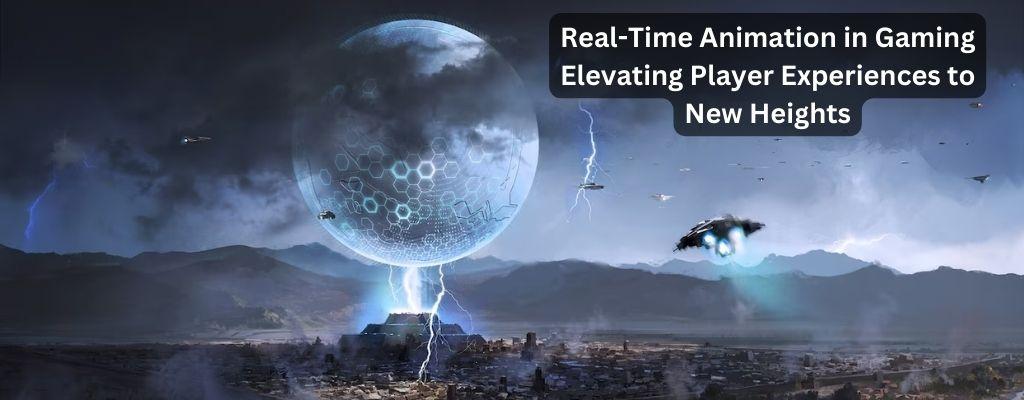
In the ever-evolving realm of gaming, one technological marvel has emerged as a transformative force: Real-Time Animation in gaming. This cutting-edge innovation is not merely a technical enhancement but a game-changer that has revolutionized how players interact with virtual worlds. From lifelike character movements to dynamic environments, real-time animation has propelled gaming experiences to unprecedented heights.
Table of Contents
ToggleThe Evolution of Animation in Gaming
To appreciate the impact of real-time animation, it’s essential to trace the evolution of animation in gaming. In the early days, games relied on simple sprites and limited frame animations. As technology advanced, so did the possibilities. The introduction of 3D graphics marked a significant leap forward, enabling more realistic character designs and immersive environments.
However, the true breakthrough came with real-time animation. Unlike pre-rendered animations, which are created in advance and played back during gameplay, real-time animation generates animations on the fly. This means that character movements, facial expressions, and environmental changes are all processed in real-time, responding to player inputs and actions instantaneously.
Lifelike Characters and Expressions
One of the most noticeable impacts of real-time animation in gaming is the creation of truly lifelike characters. Facial expressions, body language, and subtle nuances that were once challenging to portray are now rendered in real-time, adding a new layer of depth to character interaction.
Imagine a role-playing game where characters not only respond to the choices made by the player but also express a range of emotions in real-time. Real-time animation allows for dynamic facial animations that reflect joy, sorrow, anger, and everything in between. This level of realism enhances the player’s emotional connection to the game, making the experience more immersive and engaging.
Dynamic Environments that Respond to Players
Beyond character animation, real-time technology has transformed gaming environments. Traditionally, game environments were static, with predetermined animations and limited interactivity. Real-time animation has shattered these constraints, allowing for dynamic and responsive game worlds.
For instance, in an open-world game, weather conditions can change on the fly, affecting visibility and gameplay. Real-time animation enables the seamless transition from day to night, with lighting and shadows adjusting in real-time. The result is an environment that feels alive, with natural elements responding dynamically to player actions.
The Role of Real-Time Animation in Multiplayer Experiences
The multiplayer gaming landscape has also been greatly influenced by real-time animation. In competitive multiplayer games, split-second decisions can determine victory or defeat. Real-time animation ensures that the actions of each player are reflected instantly for others in the game.
Consider a first-person shooter where the fluidity of character movements is crucial. Real-time animation ensures that every jump, crouch, and sprint is rendered in real-time, allowing players to react quickly to the unfolding action. This level of responsiveness is not only a technical feat but a game design triumph that enhances the competitive nature of multiplayer gaming.
Challenges and Innovations in Real-Time Animation
While real-time animation has brought about tremendous advancements, it is not without its challenges. The demand for high-quality graphics in real-time puts a strain on hardware, requiring constant innovation in graphics processing units (GPUs) and central processing units (CPUs). Game developers must strike a balance between realism and performance to ensure smooth gameplay experiences.
However, the challenges have spurred innovation. Real-time ray tracing, a rendering technique that simulates the way light interacts with virtual objects, has become a game-changer. This technology enhances the realism of graphics by accurately simulating reflections, shadows, and lighting conditions in real-time. As hardware capabilities continue to evolve, real-time animation in gaming is poised to reach even greater heights.
The Future of Real-Time Animation in Gaming
As we look to the future, the trajectory of real-time animation in gaming is nothing short of exciting. Virtual and augmented reality (VR/AR) gaming experiences stand to benefit immensely from real-time animation, creating even more immersive worlds for players to explore.
Furthermore, advancements in artificial intelligence (AI) are likely to play a significant role in shaping the future of real-time animation. AI-driven animations can adapt to player behavior, creating personalized and dynamic experiences. Imagine a game where non-player characters (NPCs) learn and evolve based on the player’s actions, providing a truly unique and tailored gaming experience.
In conclusion, real-time animation in gaming has transcended the boundaries of traditional game development. It has elevated player experiences by delivering unprecedented levels of realism, interactivity, and immersion. As technology continues to advance, we can only anticipate that the marriage of real-time animation and gaming will lead to even more remarkable and unforgettable experiences for players around the world. The journey has just begun, and the future promises a gaming landscape where the lines between reality and virtuality blur, thanks to the magic of real-time animation.

